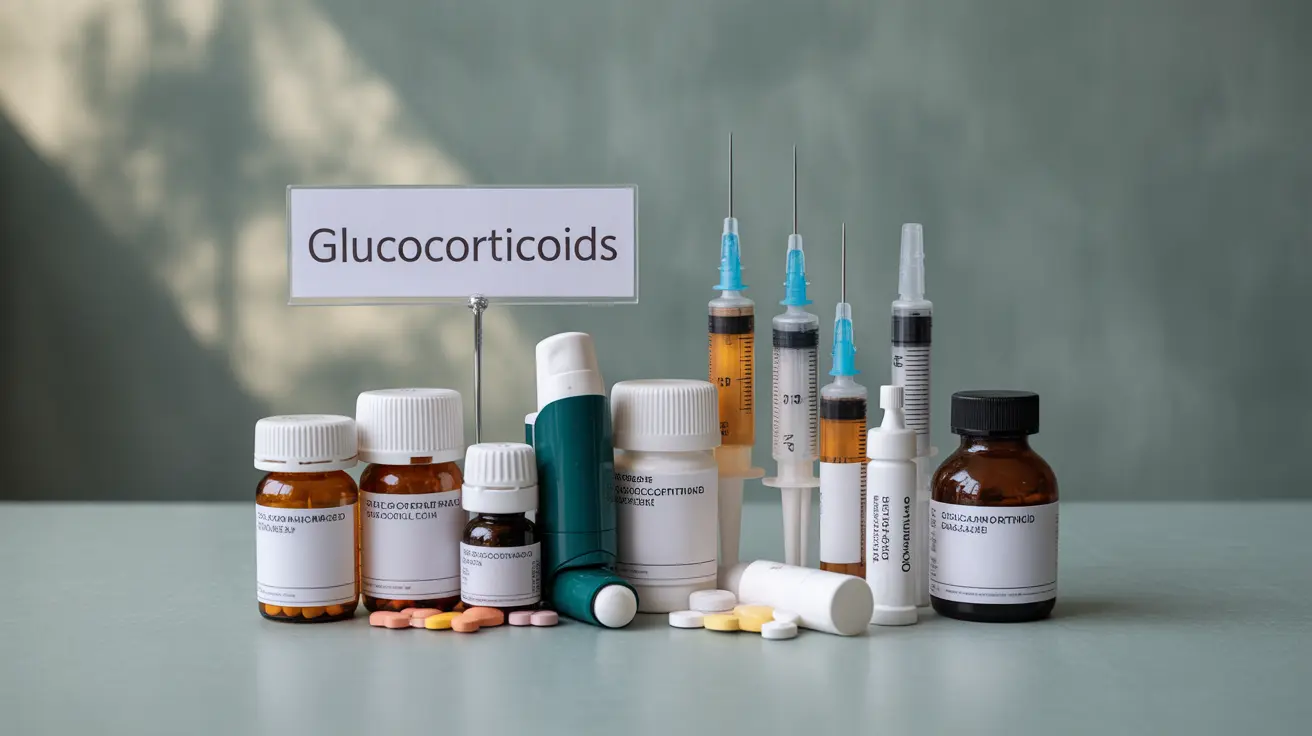Glucocorticoid medications are powerful anti-inflammatory and immunosuppressive drugs that play a crucial role in treating various medical conditions. These medications mirror the effects of cortisol, a natural hormone produced by the body's adrenal glands, but often at higher therapeutic doses to achieve stronger effects.
For healthcare providers and patients alike, understanding these medications is essential as they are widely prescribed for conditions ranging from asthma to autoimmune disorders. This comprehensive guide explores the different types of glucocorticoids, their applications, and important considerations for their use.
Common Types of Glucocorticoid Medications
Several glucocorticoid medications are regularly prescribed in medical practice. Each has specific characteristics and uses:
Oral Glucocorticoids
- Prednisone: Most commonly prescribed, especially for acute conditions
- Methylprednisolone: Often used for severe inflammatory conditions
- Dexamethasone: Particularly potent, used in specific medical scenarios
- Hydrocortisone: Closest to natural cortisol, used for replacement therapy
Inhaled Glucocorticoids
- Fluticasone: Common in asthma and COPD treatment
- Budesonide: Frequently used for respiratory conditions
- Beclomethasone: Effective for chronic breathing disorders
Topical Glucocorticoids
- Betamethasone: Used for skin inflammation
- Triamcinolone: Available in various strengths for different conditions
- Clobetasol: Reserved for severe skin problems
How Glucocorticoids Work
Glucocorticoids function through multiple mechanisms in the body:
These medications reduce inflammation by suppressing the production of inflammatory chemicals and limiting immune cell activity. They also decrease the body's immune response by affecting various types of white blood cells and reducing antibody production.
Medical Conditions Treated with Glucocorticoids
Healthcare providers prescribe glucocorticoids for numerous conditions:
Respiratory Conditions
- Asthma
- Chronic Obstructive Pulmonary Disease (COPD)
- Severe allergic reactions
Autoimmune Disorders
- Rheumatoid arthritis
- Lupus
- Multiple sclerosis
- Inflammatory bowel disease
Skin Conditions
- Eczema
- Psoriasis
- Contact dermatitis
Administration Methods
Glucocorticoids can be administered through various routes:
- Oral tablets or liquids
- Inhaled medications
- Topical creams, ointments, or gels
- Injectable forms (intravenous or intramuscular)
- Local injections for joint problems
Important Considerations and Side Effects
While effective, glucocorticoids require careful monitoring due to potential side effects, especially with long-term use:
Short-term Effects
- Increased appetite
- Mood changes
- Sleep disturbances
- Higher blood sugar levels
- Fluid retention
Long-term Risks
- Osteoporosis
- Weight gain
- Increased infection risk
- Skin thinning
- Diabetes development or worsening
- Adrenal suppression
Frequently Asked Questions
What are common examples of glucocorticoid medications and how are they used?
Prednisone, methylprednisolone, and dexamethasone are common examples. They're used in various forms (oral, inhaled, or topical) depending on the condition being treated.
How do glucocorticoids work to reduce inflammation and suppress the immune system?
Glucocorticoids work by blocking inflammatory chemicals and reducing immune cell activity. They interfere with the production of substances that trigger inflammation and modify immune system responses.
What are the potential side effects and risks of long-term glucocorticoid use?
Long-term risks include osteoporosis, weight gain, increased infection risk, diabetes, high blood pressure, and adrenal gland suppression. Regular monitoring is essential during treatment.
Which medical conditions are typically treated with glucocorticoids?
Glucocorticoids treat various conditions including asthma, COPD, autoimmune disorders, skin conditions, allergic reactions, and inflammatory diseases.
How are glucocorticoids administered for different health problems?
Administration varies by condition: inhaled forms for respiratory issues, topical applications for skin conditions, oral medications for systemic conditions, and injections for localized problems or severe cases.




